2024
> Soli Kiani / Stucked In
2023
> Where we go from here
> Curated by Martha Kirszenbaum
> Renate Bertlmann / Intimacy
> Marian Palla / erdig
> spielzimmer
2022
> allways on my mind
> Tomasz Kulka
> Curated by Vít Havranek / Remembering as Therapy
> Matthias Herrmann / Hiatus
> Clemens Wolf / form follows function
> Fabian Erik Patzak / The Lucky Ones
2021
> Gudrun Kampl / Bindungen
> Curated by Pierre-Yves Desaive / One day it will be like when we ́ve already lived
> Olga Georgieva / wild and hard
> Rooms and spaces - Carsten Nicolai, Richard Ross, Richard Long, Lawrence Weiner, Clemens Wolf
2020
> Apeirogon / Groupshow
> Curated by Susanne Rohringer / Arcadia all Over
> LIAISON / Renate Bertlmann, Olga Georgieva, Matthias Herrmann, Tony Oursler, Carol Rama
> Clemens Wolf / Can´t Touch This

> Soli Kiani / Stucked In
2023
> Where we go from here
> Curated by Martha Kirszenbaum
> Renate Bertlmann / Intimacy
> Marian Palla / erdig
> spielzimmer
2022
> allways on my mind
> Tomasz Kulka
> Curated by Vít Havranek / Remembering as Therapy
> Matthias Herrmann / Hiatus
> Clemens Wolf / form follows function
> Fabian Erik Patzak / The Lucky Ones
2021
> Gudrun Kampl / Bindungen
> Curated by Pierre-Yves Desaive / One day it will be like when we ́ve already lived
> Olga Georgieva / wild and hard
> Rooms and spaces - Carsten Nicolai, Richard Ross, Richard Long, Lawrence Weiner, Clemens Wolf
2020
> Apeirogon / Groupshow
> Curated by Susanne Rohringer / Arcadia all Over
> LIAISON / Renate Bertlmann, Olga Georgieva, Matthias Herrmann, Tony Oursler, Carol Rama
> Clemens Wolf / Can´t Touch This
2022_Curated by_Vienna_Kelet
Remembering as Therapy
Curated by Vít Havranek
Babi Badalov
Barbora Kleinhamplová
Marián Palla
Iza Pavlina
part of the gallery festival "Curated by_Vienna_2022_Kelet"
based on an essay by Dieter Roelstraete
https://curatedby.at/
Opening 9. September 2022
Duration 10. September - 8. Oktober 2022
Remembering as Therapy
Curated by Vít Havranek
Babi Badalov
Barbora Kleinhamplová
Marián Palla
Iza Pavlina
part of the gallery festival "Curated by_Vienna_2022_Kelet"
based on an essay by Dieter Roelstraete
https://curatedby.at/
Opening 9. September 2022
Duration 10. September - 8. Oktober 2022
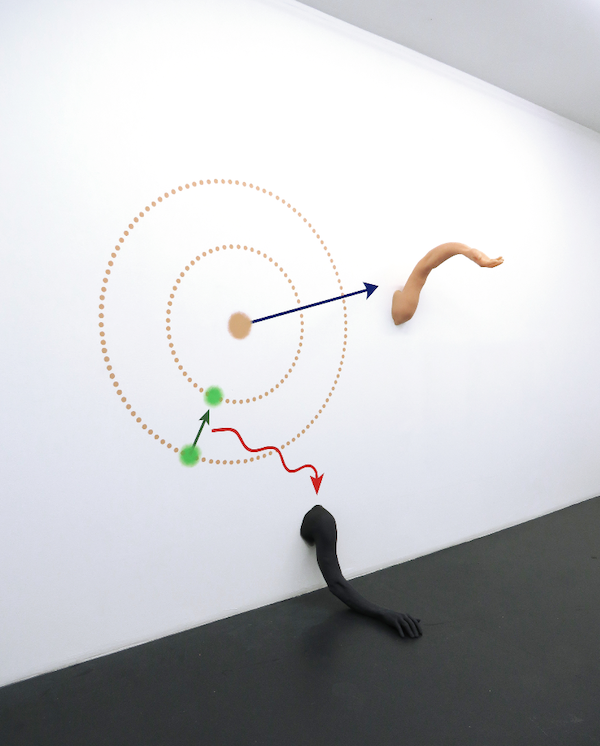
Exhibition view, detail of Barbora Kleinhamplova´s installation: Many-Body-Problem, 2022
2 silicon arms, wall diagram (handmade painting), glass vials, various dimensions, Uniques
2 silicon arms, wall diagram (handmade painting), glass vials, various dimensions, Uniques
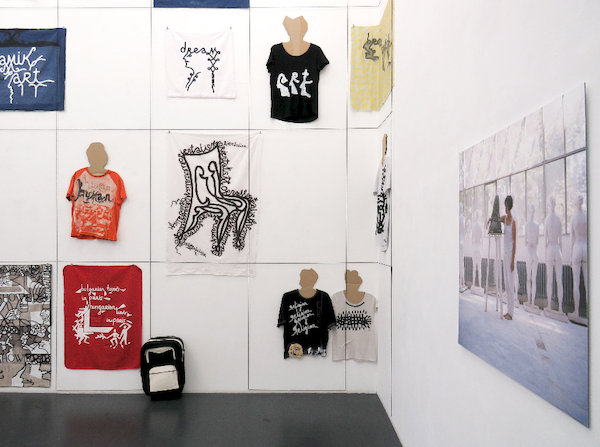
Exhibition view, Babi Badalov, installation of paintings on fabrics and Tshirts, 2022,
Courtesy Galerie Jerôme Poggi, Paris
Barbora Kleinhamplova, Dirt, photograph, 90 x 90 cm, Edition of 5
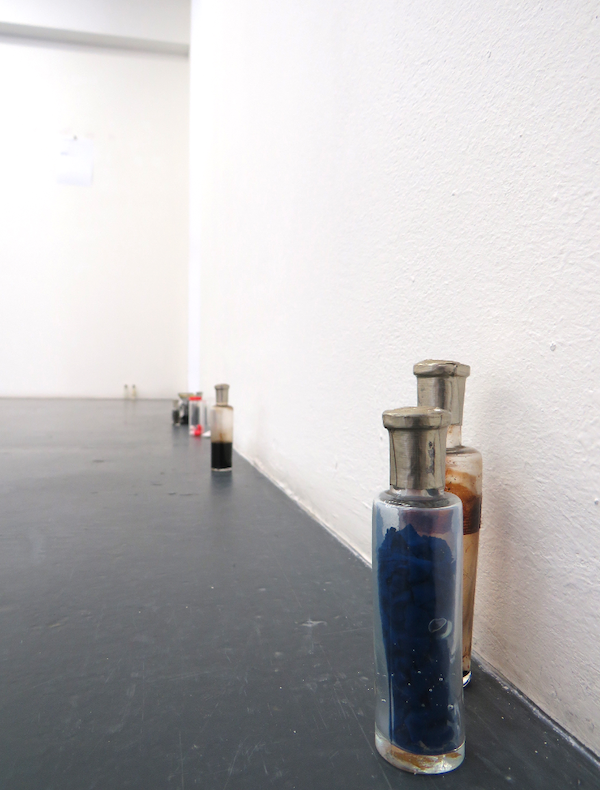
Exhibition view, detail of Barbora Kleinhamplova´s installation: Many-Body-Problem, 2022
2 silicon arms, wall diagram (handmade painting), glass vials, various dimensions, Uniques
2 silicon arms, wall diagram (handmade painting), glass vials, various dimensions, Uniques
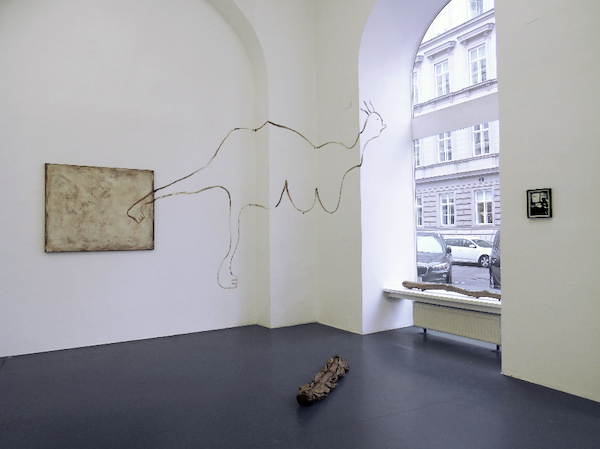
Exhibition view, Marián Palla, from left to right : Leg, 2022, Mixted technics and clay on
canvas, on wall, 100 x 120 cm and extension variabel in Situ / on the floor : Wrapped, first half
of 80´s Wood, textile, cord and clay, 120 x 23 ø cm / on the shelf : Perforated, first half of 80´s,
Wood, textile, clay, 158 x 10 ø cm / "Malování čar", Painting long lasting performance, late 70ies,
C-Print, Editon of 3 © Carol Tachdjian

Exhibition view, Marián Palla, By Nose, 2022, Mixted technics and clay on canvas, on wall,
70 x 70 cm © Carol Tachdjian

Exhibition view, left : Iza Pavlina, from the serie „This Image has been Masturbated to“, 2022
Vector drawing, A4 print on 300 g paper / right : Babi Badalov, installation of paintings
Vector drawing, A4 print on 300 g paper / right : Babi Badalov, installation of paintings
on fabrics and Tshirts, 2022, Courtesy Galerie Jerôme Poggi, Paris
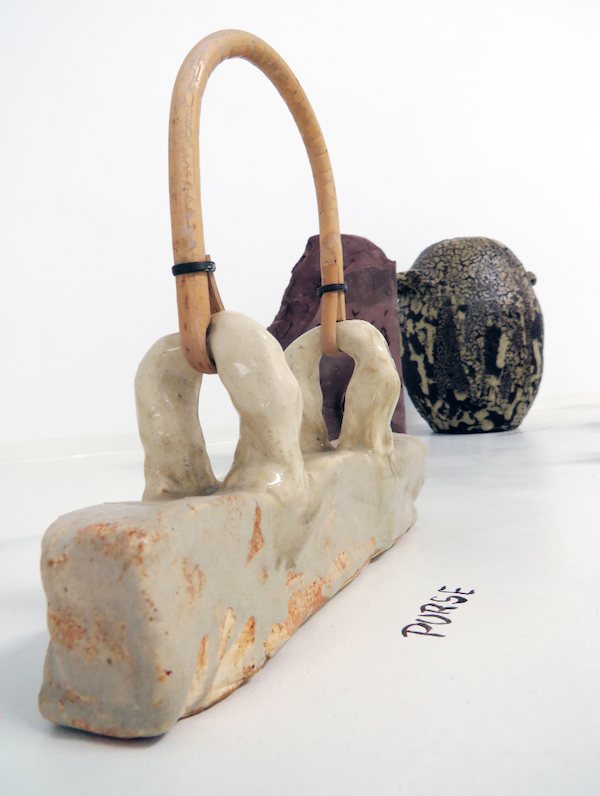
Exhibition view, Marián Palla, Purse, 2022, Glazed clay, rattan, 22 x 4 x 21 cm © Carol Tachdjian

Exhibition view, Iza Pavlina, Rule 34 (Amateur teen pleasuring herself with mud), 2017,
video screenshot © Carol Tachdjian
,_2017,_video_screenshot._1.png)
Exhibition view, Iza Pavlina, Rule 34 (Amateur teen pleasuring herself with mud), 2017,
video screenshot © Iza Pavlina
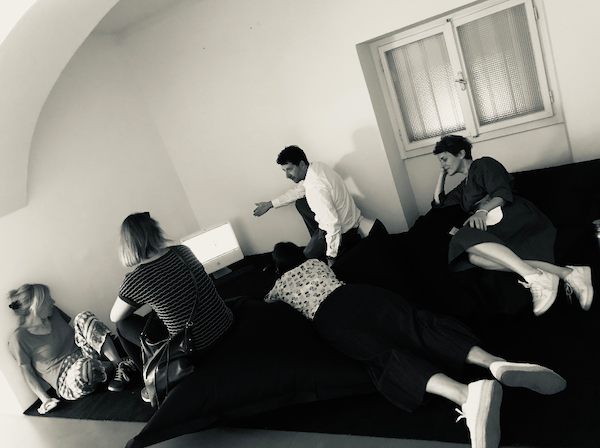
Exhibition view, Iza Pavlina, Rule 34 (Amateur teen pleasuring herself with mud), 2017, video screenshot © Carol Tachdjian

Marian Palla, "Malování čar"-Painting long lasting performance, late 70ies © Marian Palla
Remembering as Therapy
Babi Badalov
Barbora Kleinhamplová
Marián Palla
Iza Pavlina
9.9. - 8.10.2022
Was it the difficult-to-bear images of the Russian war in Ukraine that evoked a memory from the early 2000s when Westerners for the last time were able to understand the differences of the East with curiosity?
Today, we remember eastern differences not for reasons of national, ideological, community-based, or any other sentimentality, but as therapy in a traumatic situation. Memories of being understood produce a sedative effect in the patient and return to him an entire sphere that is once again labelled felt and thought material for imagining the future. It is a process that relates to individuals, groups of individuals, and society.
Many artists or historians might question whether it is real understanding that this remembering returns to. If we consider Lacan’s statement regarding the nature of truthful statements in the process of psychoanalysis, then the current moment is not so much about the level of realness on which that earlier understanding was based, but relates much more to a reorganization of that understanding so that it may meet the necessities to come.
Some of the works at this exhibition combine the present with a far more distant past than the decades covered by the memories of even the oldest living organisms. Marián Palla confronts painting with human prehistory (“that age of innocence”), with cave prints and iconic depictions of reality. He paints using clay. His programmatic “naivization” of conceptual art endeavors for ideas born of the urban environment of intellectual centers in New York and London to not remain accessible only to the satoris of selected cultural elites, but for them to arouse viewers’ curiosity regardless of age or origin. Babi Badalov has traversed a cross of cultural, linguistic, political, and gender identities from Azar, Persian, Iranian, Soviet, Russian, and Western settings, and this mix also characterizes his work. The strokes that form a word in his drawings lose their artistic form and are transformed into undulating lines. Words are transformed into ornaments, periodically repeated at certain frequencies. And vice versa, a bubbling cauldron of ornaments and signs forms a point “before interpretation.” It is from this perspective that the viewer must read the tangle of manifestos, assonances, dissonances, and phrases describing the conditions of “bare life” – not just of the people suffering in Ukraine, but of everyone in a world divided by cultural differences.
The works by the next two artists guide the viewer towards the therapeutic aspect of a story lacking any readable signs of the East. Iza Pavlina’s interventions on the most popular online porn sites (PornHub.com, Xhamster.com) make seductive use of the mimicry of a young female idol satisfying male sexual desires fixated on fetishes such as mud, excrement, rubber, harnesses, cuffs, and so on. They are a perfect aesthetic game, since they never cross the boundaries of the vulgar and keep the viewer in constant tension as to when he will finally see exposed sexual characteristics. As shown by the comments and number of views (more than one million) this game of controlling the desire of porn viewers has been uncommonly successful and goes far beyond the internet. Pavlina has re-coded a tool for objectifying and commodifying the female body into a tool for controlling the porn consumer while offering a reversal of power roles.
Ever since their creation, Barbora Kleinhamplová’s silicon hands (Problems Solved, 2017) – which according to the artist refer to the difficult conditions of the world of manual labor – have taken on an increasingly broader range of meanings. The fatigue, sleep disorders, traumas, and anxieties of precarious professions are spreading under hidden codes (and sometimes with an optimistic design) throughout all of society to such a clear extent that they cannot avoid philosophical observation (Byung-Chul Han, The Burnout Society). And yet, with just a few exceptions, it remains a taboo subject for the mainstream media and politicians. Hands – those generators of caressing and touching, those factories of care – are engaged in a fierce struggle with the force of gravity, which here stands for the invisible “hand of the market.” The precise and site-specific arrangement of objects during the exhibition’s installation at Galerie Steinek was done with the goal of offering a report on the current impact of traumatic weight on the muscles we need to function.
Babi Badalov
Barbora Kleinhamplová
Marián Palla
Iza Pavlina
9.9. - 8.10.2022
Was it the difficult-to-bear images of the Russian war in Ukraine that evoked a memory from the early 2000s when Westerners for the last time were able to understand the differences of the East with curiosity?
Today, we remember eastern differences not for reasons of national, ideological, community-based, or any other sentimentality, but as therapy in a traumatic situation. Memories of being understood produce a sedative effect in the patient and return to him an entire sphere that is once again labelled felt and thought material for imagining the future. It is a process that relates to individuals, groups of individuals, and society.
Many artists or historians might question whether it is real understanding that this remembering returns to. If we consider Lacan’s statement regarding the nature of truthful statements in the process of psychoanalysis, then the current moment is not so much about the level of realness on which that earlier understanding was based, but relates much more to a reorganization of that understanding so that it may meet the necessities to come.
Some of the works at this exhibition combine the present with a far more distant past than the decades covered by the memories of even the oldest living organisms. Marián Palla confronts painting with human prehistory (“that age of innocence”), with cave prints and iconic depictions of reality. He paints using clay. His programmatic “naivization” of conceptual art endeavors for ideas born of the urban environment of intellectual centers in New York and London to not remain accessible only to the satoris of selected cultural elites, but for them to arouse viewers’ curiosity regardless of age or origin. Babi Badalov has traversed a cross of cultural, linguistic, political, and gender identities from Azar, Persian, Iranian, Soviet, Russian, and Western settings, and this mix also characterizes his work. The strokes that form a word in his drawings lose their artistic form and are transformed into undulating lines. Words are transformed into ornaments, periodically repeated at certain frequencies. And vice versa, a bubbling cauldron of ornaments and signs forms a point “before interpretation.” It is from this perspective that the viewer must read the tangle of manifestos, assonances, dissonances, and phrases describing the conditions of “bare life” – not just of the people suffering in Ukraine, but of everyone in a world divided by cultural differences.
The works by the next two artists guide the viewer towards the therapeutic aspect of a story lacking any readable signs of the East. Iza Pavlina’s interventions on the most popular online porn sites (PornHub.com, Xhamster.com) make seductive use of the mimicry of a young female idol satisfying male sexual desires fixated on fetishes such as mud, excrement, rubber, harnesses, cuffs, and so on. They are a perfect aesthetic game, since they never cross the boundaries of the vulgar and keep the viewer in constant tension as to when he will finally see exposed sexual characteristics. As shown by the comments and number of views (more than one million) this game of controlling the desire of porn viewers has been uncommonly successful and goes far beyond the internet. Pavlina has re-coded a tool for objectifying and commodifying the female body into a tool for controlling the porn consumer while offering a reversal of power roles.
Ever since their creation, Barbora Kleinhamplová’s silicon hands (Problems Solved, 2017) – which according to the artist refer to the difficult conditions of the world of manual labor – have taken on an increasingly broader range of meanings. The fatigue, sleep disorders, traumas, and anxieties of precarious professions are spreading under hidden codes (and sometimes with an optimistic design) throughout all of society to such a clear extent that they cannot avoid philosophical observation (Byung-Chul Han, The Burnout Society). And yet, with just a few exceptions, it remains a taboo subject for the mainstream media and politicians. Hands – those generators of caressing and touching, those factories of care – are engaged in a fierce struggle with the force of gravity, which here stands for the invisible “hand of the market.” The precise and site-specific arrangement of objects during the exhibition’s installation at Galerie Steinek was done with the goal of offering a report on the current impact of traumatic weight on the muscles we need to function.
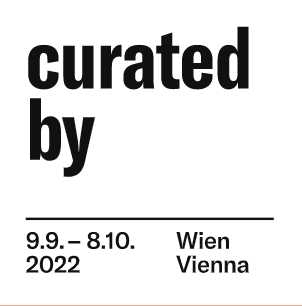
_____________________________